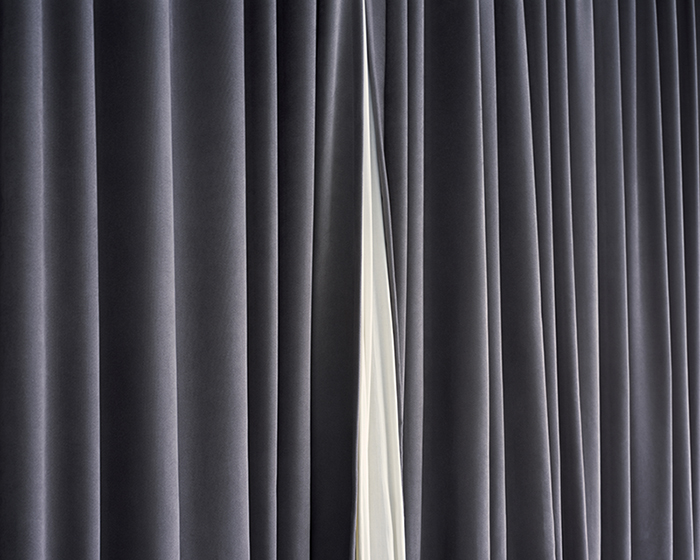Artist’s Statement
Sharon Murphy is a lens-based artist whose work resides in the blur between fact and fiction questioning the boundaries between the seen and the unseen, the real and the unreal. In
Intervals (2015), the theatre curtain empty staged spaces and places of performance are recurring motifs in her work, highlighting her exploration of the correlation between the fictive and the real and the nature of liminal space. Her work addresses the territory of uncertainty, the “there and not there’ which draws on her interest in Magic Realism and psychoanalysis. How viewers can be guided to question the exact nature of what they are seeing is an abiding concern.
![]() Intervals, 2015
Intervals, 2015
Early works centre around allegory and reflects her theatre background using mise-en-scéne and the deliberately staged to question inner / outer realities of a portrait and the dream / real-life qualities of a scene. Consciously constructed, these works are overtly theatrical and invite a distinct reading of the world as a staged dramatic narrative.
Murphy’s
There was a Child series (2015 – 2018), marked a shift from the overtly staged to the uses of the tropes of the staged to imbue a sense of strangeness, otherness and the sinister. Taking John Berger’s statement that the relation between what we see and what we know is never settled, Murphy’s work moves from the solidity of the staged scene into ambiguous territory where she invites the viewer to question the nature of what they are seeing.
![]() There was a Child (2015 – 2018)
There was a Child (2015 – 2018)
Referencing Freud’s ‘uncanny’ and Jung’s ‘ego / self / shadow’ multiple selves, Murphy’s recent works can be viewed through the lens of Magic Realism where seemingly innocuous images begin to appear otherworldly, sinister and strange the longer that they are looked at. Uncanny disquiet weaves a characteristic thread through a new more non-linear narrative and abstract style. Murphy’s many images of curtains, veils and thresholds that once appeared to be symbolic theatre motifs to staging and performance now offer a subtle threat of what may be concealed or revealed, behind or within. This is explored in her figure-in-the-landscape series
Now You See Me (2020)
which forces us to investigate the veracity of our assumptions. This work alludes to the perennial question of photography’s truth-telling, its documentary / fictive dilemma.
![]() Now You See Me (2020)
Now You See Me (2020)
Current work (
but here alone), uses Parisian carousels
as a subject, continue this preoccupatio with the distinction between the ‘reveal / conceal’ dichotomy. With funfairs and circuses being frequent settings for the Magic Realism genre, the disparity between the seeming joy of the open and animated carousel of the daytime and the prevailing strangeness of the shuttered carousels feed into Schelling’s definition of the uncanny (unheimlich) as the name for everything that ought to have remained hidden and secret but has become visible. Murphy does not aim to reveal ‘what lies beneath’, but rather to alert us to the possibility that all is not as it seems. There are no resolutions in her works, the stories are not told, but rather we are left with a nagging sense that there is something more to know.
![]() but here alone
but here alone



 Intervals, 2015
Intervals, 2015 There was a Child (2015 – 2018)
There was a Child (2015 – 2018)